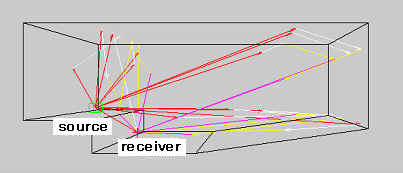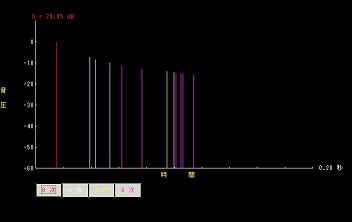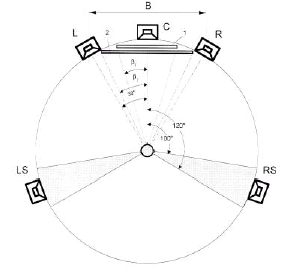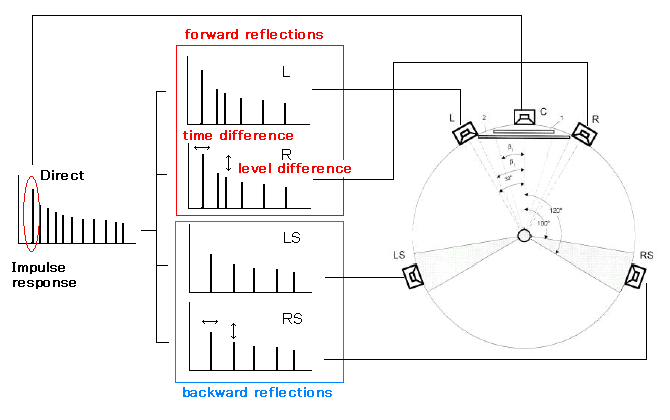
Work plan in 2004
Aim of research
We aim to develop a technique to realize the sound field reproduction of concert halls at low cost. It is possible to reproduce the concert hall sound field by converting a monaural source to 2ch or 4ch signals using the information of reflective sound (direction, amplitude, and time delay) calculated by the acoustic CAD software. By this approach, we do not need a large-scale multi-speaker system as before. Also, the use of the acoustic CAD software allows to reduce cost of acoustic measurement in the actual halls. We expect that this project will contribute to the realization of the seat selection system of concert halls on the Internet.
Background
We are conducting the research on the Preference Test and Seat Selection System of Concert Hall on the Internet since 2002. This is a system by which the audience can choose the seat in the concert hall based on their preference and can purchase a ticket on the Web.
Generally, the criterion of selecting a seat in a concert hall is a good stage view. The ticket price becomes expensive for the seats close to the stage. It is not widely recognized, however, that the sound quality changes a lot by the position inside the hall. We have performed the acoustic measurement in two Japanese concert halls and found that the acoustic qualities, such as the sound level, the reverberance, and the spaciousness, are quite different between seat positions in the same hall. We think that the audiences can obtain higher satisfaction if they know their preference of sound and listen to the music at their suitable seats.
In order to enable listeners to get to know their sound preference, it is required to give them chance of experiencing the sound in the halls. An example of equipment for this purpose is the sound simulation room in the Kirishima International Music Hall. The 16ch surround sound system is installed in this room. However, installing such equipment in every hall is actually difficult. There is another restriction that people cannot experience if they do not visit that place. Therefore, we propose a sound field reproduction system available on the Internet.
The technique for the concert hall sound field reproduction is called Auralization, and many different methods have been proposed. Among them, one of the most widely used technique is the multi-channel reproduction system. In this system, the loudspeakers are placed at various direction of the listener so that the reflective sounds are reproduced from them depending on their direction. This system provides a good sound localization without any special signal processing, but needs many channels for minimizing the localization error. For our purpose, the auralization system with less channels is required.
Reproduced signal in the multi-channel system is a convolution of the music signal (dry source) and the impulse response in the concert hall. The impulse response contains information of reflective sound (its direction, strength, and time delay) arriving after the direct sound. To reproduce the sound fields at every seat positions in the hall, we need many impulse responses recorded at those positions. However, it takes much time and cost. Therefore, it is reasonable to use the calculated impulse response by use of the acoustic simulation.
Work plan
Calculation of the impulse response by the acoustic CAD software
In the acoustic CAD software, we can calculate the direction, the amplitude, and the time delay of reflections at any particular position inside the hall, by using the image source method. An example of the calculation result is shown below. In this figure, the path of the reflective sounds are represented as colored lines. Different colors indicate the different order of reflection. In this example, first to third order reflection is shown.

Figure 1: an example of the simulation result by the image source method
In the computation of the reflection path, it takes much time for selecting the reflective surface and for detecting the interrupting surface on the reflection path. In our original acoustic CAD software, YMCAD, we reduce the computation time by narrowing down the candidates of reflecting surface and the interrupting surface beforehand. As compared with the conventional method, our method improves the computation speed of about 1000 times when up to fifth reflections are considered.
In the image source method the impulse response is also calculated. Each reflection contains information of its amplitude, direction, and time delay from the direct sound. The multi-channel reproduction system decomposes this impulse response according to the direction of a speaker, then outputs each reflection with appropriate time delay. Separately reproduced reflections are then summed up in the listening room, and the original impulse response is reconstructed .

Figure 2: an example of the impulse response calculated by the image source method
Auralization based on the 5.1 surround sound system
5.1 surround sound system consists of six loudspeakers: center front (C), left and right front (L, R), left and right surround (LS, RS), and subwoofer (this is counted as 0.1ch). A typical layout of the loudspeakers is shown below. In this configuration, sound localization in left-right and front-rear becomes possible.

Figure 3: a layout of the loudspeakers in 5.1 surround sound system(1)
In our proposed system, the impulse response calculated by the image source method is reconstructed by five speakers (excluding 0.1 channel subwoofer, because it does not affect localization). First, the direct sound is fed into the center front speaker (C). If we assume that a listener is always faced to the musician on the stage, the direct sound always come from listener's front. Next, the reflective sounds coming from the forward of the listener are reproduced by center two speakers (L and R). By introducing the appropriate time difference and level difference between two speaker outputs, direction of each reflective sound will be perceived correctly by the listener. Finally, the reflections coming from the backward are fed into LS and RS similarly.

Figure 4: block diagram of the proposed system
Based on the methods described above, we are now developing the software to
create a 5.1ch sound file from a monaural dry source. We expect that this
enables the distribution of the simulated sound field of concert halls by using
simple speaker configurations.
Reference
1.Multichannel surround sound systems and operations, AES Technical Council Document, AESTD1001.0.01-05.